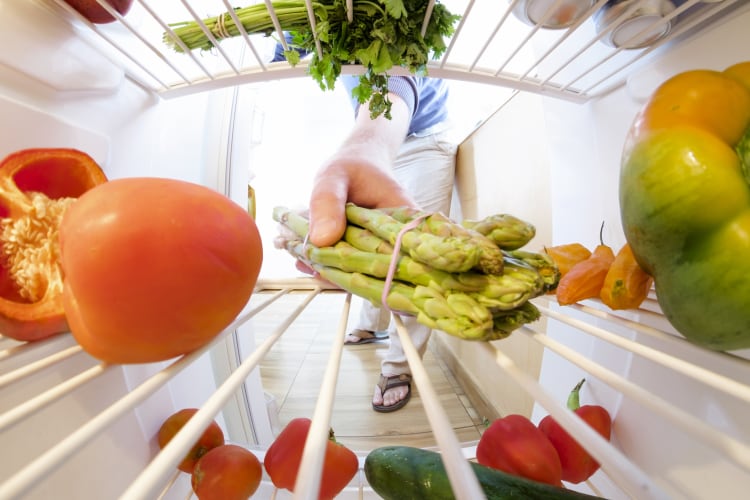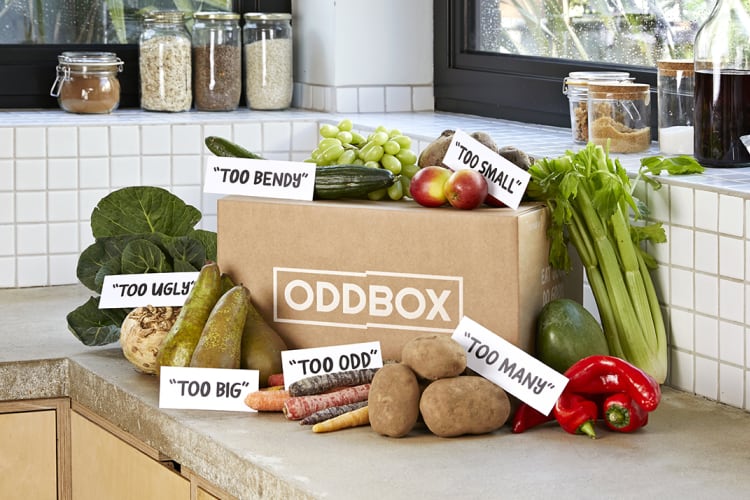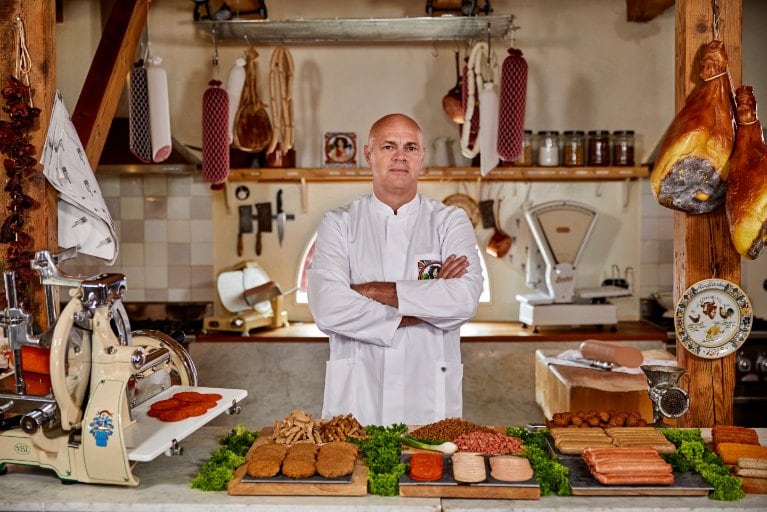One third of all the food produced globally goes to waste. If food waste were a country, it would be the world’s third-largest emitter of greenhouse gases, behind only China and the USA. Twenty-five percent of the world’s fresh water supply is used to grow food that is never eaten.
Beyond the environmental cost, in a world where 842m people suffer from what the FAO defines as ‘chronic hunger’, the moral implications of food waste are also clear. It has been estimated that all the world’s hungry people could be fed on less than a quarter of the food that is thrown away in Europe and the US.
“Food waste is a growing humanitarian and environmental crisis,” Unilever’s Christina Bauer-Plank stressed.
As a member of the Champions 12.3 initiative, Unilever is dedicated to addressing food waste - and this forms an important part of the company’s Future Foods strategy.
The Knorr-to-Magnum manufacturer has committed to halve food waste in its direct operations – from factory to shelf – by 2025, achieving zero waste to landfill and ensuring no ‘good food’ is destroyed. Unilever is ‘enrolling key supply partners’ to tackle waste and working with customers in foodservice to combat the problem. The company is also taking on the challenge of addressing food waste at home.
Food waste in the home: ‘This is where we need action’
Currently, 40% of food waste occurs at a consumer level, making this an important battleground. “This is actually the biggest contributor in the whole chain. In developed markets like the UK and North America, it is a lot higher than 40%. This is really where we need action, where we need intervention,” Bauer-Plank told us.
The average UK family loses £730 each year to food waste, in the US this figure rises to $2,275 per family, per year.
But how can Unilever affect change in a domestic setting? Bauer-Plank explained that the company hopes to leverage the power of its brands to engage and empower.
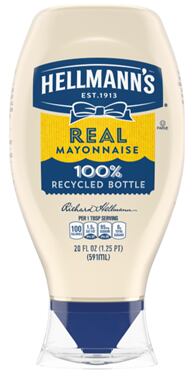
“Hellmann’s is a big global brand that is trusted by hundreds of millions of consumers. It reaches into the fridges and homes of a lot of people. As a brand, it has the opportunity and the responsibility to [support change].
“The brand has made it its mission to inspire and enable a hundred million consumers to be more resourceful with the food so that they waste less.”
Unilever is driving awareness of the problem through its brand reach. “People don’t realise the extent and impact of food waste and they don’t see how their households have a role in the problem and solution,” Bauer-Plank explained. “No one sets out meaning to throw good food away. At home, it is the outcome of a complex chain of behaviours from meal planning, shopping, storing and, of course, consumption.”
Efforts have ranged from a Super Bowl ad featuring Amy Schumer pledging to ‘make taste not waste’, to a tie-up with Nintendo’s popular Animal Crossing New Horizons game.
But raising awareness alone is ‘not enough’. This is where the company is working to provide ‘inspiration and practical solutions’ to ‘turn what's left in the fridge into something delicious’.
“Changing consumer behaviour at scale is not easy. There is real method and science to it. Hellmann’s has been partnering with behavioural psychologists and economists at BEworks and many other leading experts in the field to understand the psychology behind food waste and what interventions can positively impact consumer behaviour.”
The outcome of this work is a five-week behavioural study into food waste at home, details of which Hellmann’s released today. One of the longest behavioural change experiments on household food waste to date, Hellmann’s partnered with BEworks and 1,000 Canadian families to understand the behaviour interventions needed to reduce food waste at home.
The study asked participants to commit to one ‘Use-Up Day’ per week, where they would create at least one meal with food they already had. Participants were introduced to the ‘3+1 Approach’ generated by Hellmann’s for the study: a ‘simple and easy mental shortcut’ for how to make a meal with what is on hand... One 'base', fruit or veg plus optional protein, and a 'magic touch' of spices or sauce that brings the dish together.
The result? Food waste was reduced by one-third in participating households.
A follow-up survey revealed additional benefits, with 70% of participants reporting that they felt ‘more resourceful’ in the kitchen and 71% stating that they saved money.
Hellmann’s is now working to develop a digital experience to be launched in Canada this autumn. The ambition is to roll this out globally with the aim of reaching 100m people every year through to 2025.
Collaborating across the supply chain
Unilever doesn’t just want to influence how we use food once it's in our fridges, the company plans to work with its suppliers and customers to help change the way that food gets there in the first place.
Here, Bauer-Plank told us, collaboration is key. “As food waste doesn't occur in a silo in the food chain, collaboration is really essential. We want to have an impact beyond our direct operations - in the upstream with our suppliers, in the downstream with our customers or consumers. Collaboration and partnership is critical.”
This approach can be seen in action in Unilever’s partnership with Too Good To Go. Working with the food rescue app, Unilever has been able to team up with its foodservice customers to ‘create a win-win situation’ that tackles food waste as well as creating new revenue streams. Restaurants with surplus food can list it on Too Good To Go at reduced prices and customers can then collect.
“Less food gets wasted, additional revenue gets generated for the restaurant and the consumer has access to a quality meal at a reduced cost,” Bauer-Plank enthused, adding that Unilever also works with the app on its retail products in Belgium and France. “A win-win situation is created for everyone.”
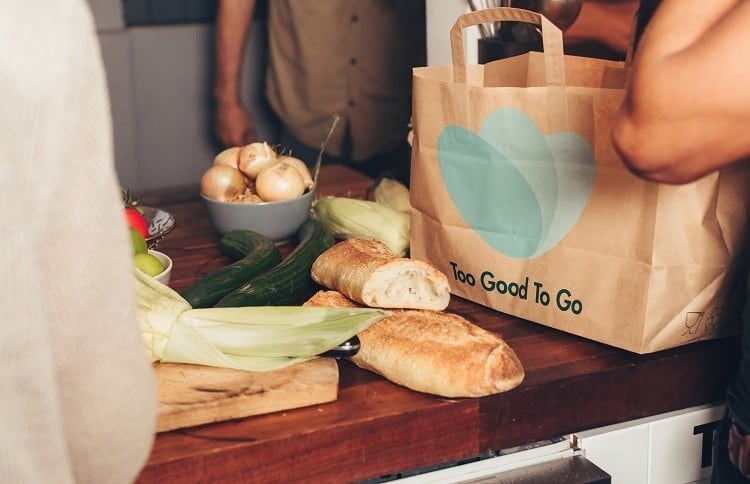
Unilever is also collaborating with foodservice customers and smart tech provider Orbisk in the Netherlands and Belgium. Orbisk measures and tracks food waste and its AI then provides insight into where savings can be made.
“This helps the restaurant or chef to understand patterns of food waste. As a consequence, they are able to identify points of over-ordering, over-preparation, waste points that are related to the type of menu. They can then optimize the operation, adjusting purchasing patterns, menus. All of that results in a reduction of food waste, but it also results in reduced costs for the operator.”
Alongside working with its customers, Unilever also expects to see its suppliers step-up action on food waste. “We want to inspire our suppliers to tackle food waste in their chain and motivate them to join in the [Champions 12.3] 10x20x30,” Bauer-Plank said.
The 10x20x30 initiative catalyses a ‘whole chain’ approach by bringing together 10+ of the world’s largest food retailers and providers, each engaging at least 20 suppliers to halve food loss and waste by 2030. “This is really what we want to do, and we are in discussions around,” Bauer-Plank revealed.
“If the entire chain puts their energy behind reducing food waste it is beneficial for everyone.
“Addressing food waste really is a triple win because it is indeed good for people, it is good for the planet, and it's good for business because it avoids a cost and creates additional revenue.”
Internal innovation: ‘R&D plays an important role’
Within its own operations, Unilever is looking to innovation and new technologies in its fight against food waste.
“R&D always plays an important role. We are tackling food waste across our entire business from manufacturing to distribution,” the company’s food waste lead told us.
One area the company is working on is reducing waste in ice cream production. While the operations teams try to minimise this, Bauer-Plank said ‘there is always inevitably some ice cream that gets left for technical reasons’.
The group’s ice cream business in Germany has developed an innovative solution: Cremissimo.

“Our Cremissimo team in Germany have developed a very innovative process in which they rescue unused ice cream and reuse it in a rich creamy [ice cream base] that flows back in the production process, where it gets enriched with indulgent chocolate sauce and white chocolate chips. And the outcome of that is a delicious product called Cremissimo Chocolate Hero, which is made from 40% would-be wasted ice cream. It's such a delicious ice cream that it became an instant success in Germany,” Bauer-Plank revealed, describing it as one of the company’s ‘top flavours’ with more than 1.2m tubs sold last year. That equates to 160 tonnes of ice cream waste repurposed.
“This is a very innovative and attractive proposition to consumers. We are looking for more opportunities and examples like this to repurpose food waste streams, all with the intent to keep food in the food chain, because that is the way that we really can reduce food waste.”
Tackling food waste ‘does not necessarily rely on sophisticated technology’ but rather the ‘disciplined target, measure, act approach' backed by Champions 12.3, Bauer-Plank suggested.
However, some technological developments have boosted Unilever’s efforts, she continued. “Technology that we find being a real enabler is working with big data, AI and predictive analytics. We applied it in our own operations to measure, analyse and track stock, including its age and residual shelf life. And that really helps us to make timely interventions and take timely action before good food becomes obsolete and eventually gets wasted.”

